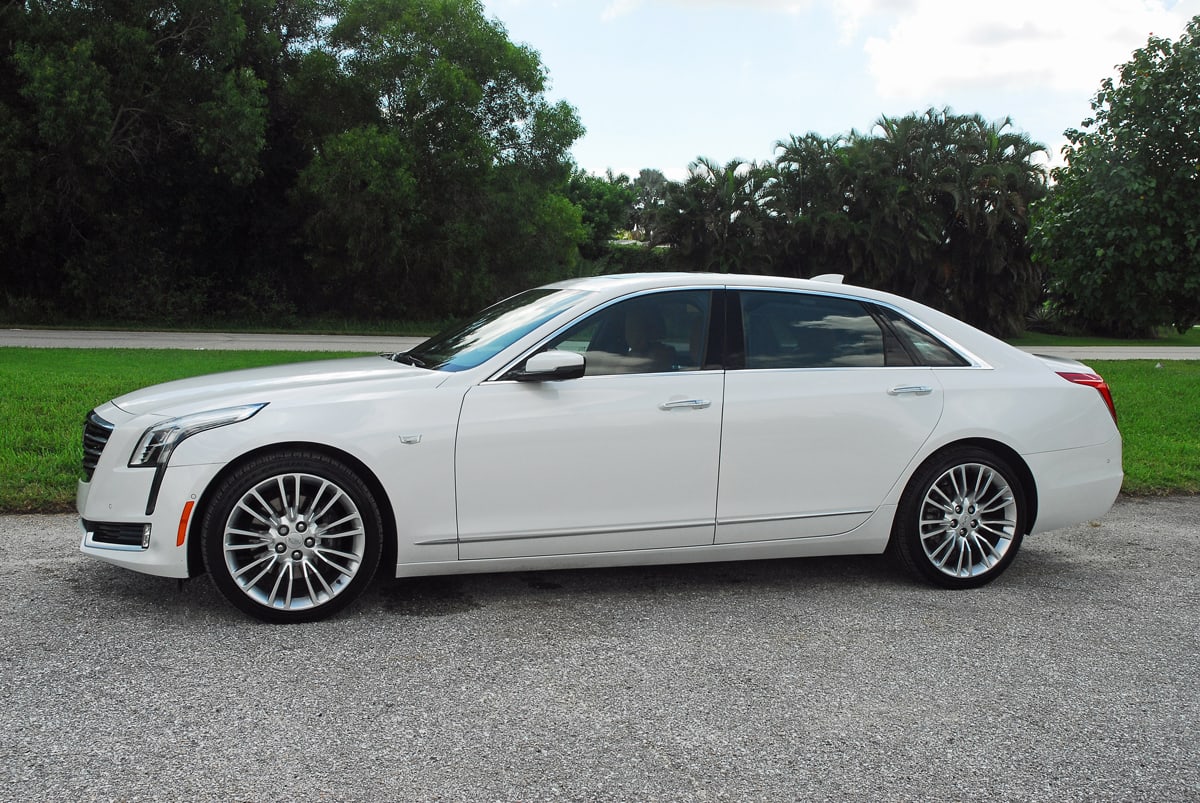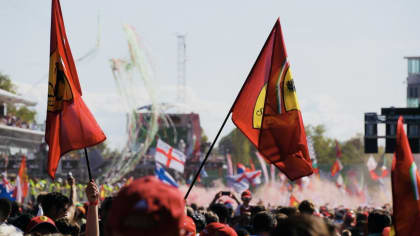THE AUTOBIOGRAPHY OF RANGE ROVER
We ride the Range Rover SV Autobiography
This article is from our archives and has not been updated and integrated with our "new" site yet... Even so, it's still awesome - so keep reading!
Published on Mon, Jul 4, 2016
By: The LACar Editorial Staff

Story and pictures by Harvey Schwartz
15-way adjustable heated and cooled seats stitched in Windsor leather with massaging function? Consoles finished from the finest woods? Deep twist pile mohair carpets? Maurice Wilks would not believe his eyes even after having repeatedly verified the Rover nameplate. Yes, he was the chief engineer of Rover after the WWII, but the vehicle he designed in 1947 was to be used chiefly to plow the fields. He’d been relying on an old Jeep in his farm in Anglesey, and thought the Brits could use something similar. This rolling exhibit of comfort may have “biography” in its designation, but they did not rely on his.
At least there is aluminum; this looks familiar. They had to use an alloy of aluminum and magnesium to make body panels because the steel was rationed. The Rover's original factory in Coventry was blown into bits during the war, so they moved into an empty factory in Solihull. But the aluminum in this Autobiography has nothing to do with rationing and make-do. The frame is aluminum (the old Rover used steel,) and body panels are also made of aluminum. The pedals and all switchgear including the start/stop surround and rotary controls are machined from solid aluminum. This detailing carries to both the front and rear center consoles which can cool occupants’ favorite beverages while those lounging in the rear watch their favorite DVDs through dual eight-inch screens. The rear pillars have solid aluminum coat hooks incorporated into the design feature. And aluminum seat rail finishers complete the feeling of sumptuous comfort.
If “(Auto)biography” refers to Spen King and Gordon Bashford who designed the original Range Rover in the late sixties, these guys would also not recognize this luxury display. Their Range Rover was, indeed, an upscale vehicle from an old Land Rover (it was almost impossible not to be,) but interiors were fairly basic, seats were vinyl, and the dashboards plastic, all designed to be washed down with a hose.
“If they could see me now,” croons Shirley MacLaine in “Sweet Charity.” Half a century later, the pinnacle of the Range Rover line-up offers bespoke exterior design and uniquely tailored interior. The drafty trips on a ladder frame have been replaced with fully independent suspension riding on air.

If one needs to hurry, the 550 horsepower and 502 pound-feet of torque, courtesy of a 5.0 liter twin-vortex supercharged V8 all-aluminum engine with a Bosch Direct Injection system will get to 60 mph from a stop in just 4.5 seconds. Aluminum may be lighter than steel, but moving two and a half tons of anything takes a lot of juice, in this case of the aromatic carbohydrates variety. For that reason Smart-Start technology increases mpg by automatically shutting down the engine at a stop, and restarting it when the driver removes her foot from the brake pedal.
It was known that the Land Rover drivers of yore had to possess exceptional strength and dexterity to engage the low ratio of the original four-wheel drive system. The Autobiography driver will not even feel gear changes thanks to the ZF eight-speed automatic transmission with adaptive-shift logic. The advanced transmission can be controlled via the steering-wheel-mounted paddle shifters. With electronics, sky is the limit. Want sportier? Shift into S (Sport) to increase the speed of gear changes. Want firmer (who doesn’t?) Tighten the air suspension and give a heavier weight to the electronically power-assisted steering system.
A viable successor to what has been considered for decades the best off-road machine (simple and reliable) must maintain the breadth of off-road capability while offering luxury when rocks turn into asphalt. (With the condition of our infrastructure this delineation can be.) The solution is called ATPC (all-terrain progress control) which allows an ultra-low creep speed – by handling cruise control interface on the steering wheel. The ATPC works from 1.1mph to 21mph in forward and reverse gears whether the Autobiography is stationary or in motion. Driver can concentrate on pointing Michelin 275/40 R 20 off-road tires over and around obstacles, while the Autobiography maintains a constant speed. Want bigger? There are giant 22X10 inch front and rear forged alloy wheels as a 2016 addition. And through the miracle of modern technology the grip and traction in dirt does not compromise a very smooth ride on blacktop.

The Autobiography is loaded with technology. A new Surround Camera System, hands-free Gesture Tailgate, automatic Access Height and even more advanced InControl connected technologies make this Rover ever more user friendly and versatile. The tested Autobiography even came with a Heads Up Display showing the speed and gear selection on the windshield.
The task of restraining this six-figure sculpture of aluminum, wood, and leather is entrusted to fifteen-inch vented rotors in the front clamped with six-piston calipers and fourteen-inch vented rotors right behind them; the latter being clamped with dual-piston calipers. With all-terrain ABS, BA, EBD, (did they just go through the acronym dictionary?) Cornering Brake Control, Hill Descent Control, two-speed transfer case with Active Rear Locking Differential, Adaptive Dynamics, Dynamic Response, Dynamic Stability Control, Roll-Stability Control, All Terrain Stability Control, and All-Terrain Progress Control, the Autobiography - whether in town or country – is a simple and relaxed ride.
Playing in the luxury SUV market requires ever more sophisticated toys. After all, this is the fastest growing segment, and the competition is rougher than the Rubicon trail. Which begs the question: will someone take the Autobiography to the trail? And let us know how it was? For those preferring Bloomingdale’s to boulders, this flagship Range Rover reaches even greater heights of design sophistication and levels of luxury execution. For the first time customers are able to specify a unique Duo-tone body color option. The combination of Santorini Black upper body and nine color choices for the lower body create distinction and individualism beyond the one expressed in the monetary instrument bearing number 150 followed by several zeros, required for the acquisition of the Autobiography. The new vehicle is distinguished with new Rover bonnet lettering (sounds so much better than hood lettering,) and the tailgate is adorned with the Autobiography badging. The new front grille is finished in distinctive Graphite Atlas and polished chrome, further promoting that ever-elusive visual individualism. The front fascia features adaptive bi-xenon headlamps, LED daytime running lamps, LED foglamps and working vents to further help cool the engine and brakes. Easy Access doors feature large pull-out handles and the rear doors also feature automatic latching. Deep lower extensions help keep dirt and grime from entering the Range Rover. Out back are all LED lamps with the spread dual exhaust pipes are hidden underneath. The look is sleek and unique.

Standard equipment list is seemingly endless: pull handles above each door with power deployable sunscreens, nine-inch center screen including an 18-speaker Meridian Surround Sound system and Navigation, power tilt and telescopic leather, heated steering wheel, four-zone climate control, extended sliding panoramic sunroof with power sunscreen, electronic parking brake, Bluetooth, USB connectivity, SIRIUS satellite radio, Voice Control with the center touch screen, powered tailgate/liftgate, all express windows, power door locks, dual map lights, rear reading lamps, solar reflective windshield, aluminum kick plates, Control, rain-sensing wipers/washers/lamp washers, rear wiper/washer, configurable interior mood lighting.
In the safety arena there are rearview camera, perimeter alarm, blind spot monitor, lane departure warning, perpendicular and parallel park assist with park exit & 360-degree parking aids, front/side airbags, side curtain airbags, front seat pretensioners, and the LATCH system for child seats.
In the upscale SUV market, the looks, power, performance (both on and off-road), brakes, interior luxury and refinements place the new 2016 Land Rover Range Rover Autobiography at the top of the segment. It has been claimed that this pride of Commonwealth (cannot say Britain, now that Rover is a part of the Tata empire) is fit for the Royalty as well as the Maharajas. Queen Elizabeth II, having grown accustomed to her old Land Rover in Sandringham, would hardly believe her eyes at the sight of the Autobiography. But Her Majesty would undoubtedly be both pleased and amused.
Isn’t that what the bespoke motor coaches are all about?
© 2016 Words supra and photographs by Harvey Schwartz
Editorial contributions by Zoran Segina
For more information about Land Rover products, go to landroverusa.com.

SPECIFICATIONS Name of vehicle: 2016 Land Rover Range Rover SV Autobiography Price: $144,995.00 (base) $150.401.00 (as tested, including destination) EPA fuel economy rating: 14 mpg in the city/19 mpg on the highway Engine: 5.0 liter twin-vortex supercharged V8 all-aluminum engine with a Bosch Direct Injection system Horsepower and torque: 550 horsepower at 6,000 rpm and 502 pound-feet of torque at 3,500 rpm Transmission: ZF eight-speed automatic transmission with adaptive-shift logic, with ATPC (all-terrain progress control) allows an ultra-low speed – by handling cruise control interface on the steering wheel. ATPC works from 1.1mph to 21mph in forward and reverse gears whether the Autobiography is stationary or in motion. Drive configuration: Four-wheel drive Suspension Four-wheel independent with stabilizer bars front and rear, Adaptive Dynamics, Dynamic Response, Dynamic Stability Control, Roll-Stability Control, All Terrain Stability Control, and All-Terrain Progress Control. Brakes: 15-inch vented rotors in the front clamped with six-piston calipers and 14-inch vented rotors in the rear, dual-piston calipers, all-terrain ABS, BA, EBD, Cornering Brake Control, Hill Descent Control, two-speed transfer case with Active Rear Locking Differential. Wheels and tires: 20-inch forged alloy wheels and Michelin 275/40 R 20 off-road tires Dimensions & other specifications Length: 204.7 inches Width 87.4 inches Height: 72.4 inches Departure angle: 29.5 Wading depth: 35.4 inches Minimum ground clearance: 8.63 inches Turning circle: 44 feet Curb weight: 5,562 pounds




